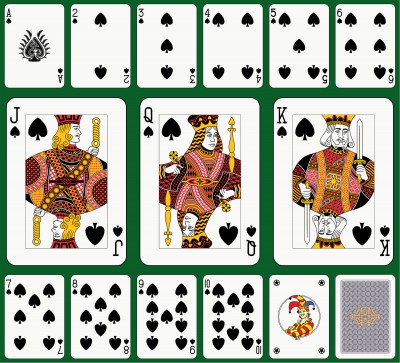The Stock Investment Strategy Tester is an exciting new tool!
We are suffering an economic crisis today (this article was posted in March 2009) because millions of middle-class investors have seen a large portion of their life savings go up in smoke and have lost confidence in the stock market and to some extent even in our economic and political system. That’s the bad news.

The good news is that for close to 30 years now academic researchers have been doing work pointing the way to a far more effective way to invest than the failed Passive Investing model. Passive Investing has always produced bone-crushing losses for all who followed it because it calls for investors to be fully invested in stocks at times of insanely dangerous prices. The Investment Strategy Tester helps you to compare the pros and cons of all sorts of stock investment strategies and thereby to quantify the losses you are likely to suffer by following a passive approach. It permits you to see that by switching from the failed Passive Indexing strategy to the more sensible Valuation-Informed Indexing strategy you can over the next three decades recover most or all of the losses you suffered in the great stock crash.
The Default Results for the stock investment strategy calculator (the results that appear until you enter inputs of your own) compare the outcomes you are likely to experience under two strategies: (1) A Valuation-Informed Indexing strategy in which you begin with $100,000 to invest; and (2) a Passive Indexing strategy in which you begin with $150,000 to invest and stick with a 50 percent stock allocation regardless of changes in valuations that increase or diminish the risks of enduring future price crashes.
The engine of the stock investment strategy calculator is the investment research of John Walter Russell. Confirming and expanding on research done by Robert Shiller and many others over the past 28 years, John has shown that stock investors pay a huge price for investing passively because returns are much higher and risks much lower when stock prices are reasonable than they are when stocks are selling at insanely dangerous prices (who’d a thunk it?). The stock investor who ignores the Passive Investing marketing slogans urging him not to time the market (that is, not to change his stock allocation in response to wild price shifts, not to follow the dictates of common sense) can thus obtain far more value for his investing dollar, enough of a premium to see better results from a starting portfolio of $100,000 than the Passive Indexer can obtain from a starting portfolio of $150,000.

Say that you had accumulated $150,000 in savings before the price crash and saw $50,000 of it disappear in the price crash. The calculator is telling you that a decision to begin investing more sensibly today is likely to yield long-term benefits great enough to make up for the entire loss! The same principles of course apply for portfolios of different sizes and for portfolio losses of different amounts. Most middle-class investors can over time make up for a large portion or perhaps even their entire loss by switching today to a more realistic long-term stock investment strategy.
John’s research uses the historical stock-return data to help us predict long-term stock returns. It shows that the valuation level that applies on the day a stock index is purchased is the key factor determining the long-term result. We cannot predict returns with precision, however. So the stock investment strategy calculator reports the likelihood of various outcomes.
The stock investment strategy calculator runs 1,000 tests of each strategy examined. The Green bars in the Results Graphic show the range of results for the best 250 outcomes produced by the 1,000 tests. The Blue bars show the range of results for the next best 250 results (Results 251 through 500). The Yellow bars show the range of results for the next best 250 results (Results 501 through 750). And the Red bars show the range of results for the worst 250 results (Results 751 through 1,000). Since the predictions are developed by performing a regression analysis on the historical data, they apply only if stocks continue to perform in the United States at least somewhat as they have always performed in the past. A technical note: For complicated statistical reasons, the best 50 results and worst 50 results are actually excluded from the analysis.
The Results Graphic of course shows that, at the end of five years, the $150,000 Passive Indexing portfolio is likely to yield better results than the $100,000 Valuation-Informed Indexing portfolio. Even a highly effective stock investment strategy will not give you enough of an edge in five years to beat a $50,000 larger portfolio. The same is true at the end of 10 years. At the end of 15 years and at the end of 20 years, the best results for the Valuation-Informed Indexing investment strategy are as good as or better than the best results for the Passive Indexing stock investment strategy, but the worst results are worse; the larger starting portfolio is still producing better results on an overall basis. The is arguably no longer true at 25 years. It is clearly no longer true at 30 years. At 30 years, the upside potential of the Valuation-Informed Indexing stock investment strategy is far higher and the downside potential is just a small bit worse. The most likely outcome (see the intersection of the Blue and Yellow bars) is far better for the Valuation-Informed Indexing stock investment strategy at Year 30.

You can compare hundreds of stock investment strategies with this calculator. As John often instructs — Have Fun!
To get started entering your own choices, please click on the “Back to ‘Choose Function’ Page” link. That will take you to a page where you will ask the Investment Strategy Tester to perform one of five functions: (1) a comparison of different allocation strategies; (2) a comparison of different starting-point valuation levels; (3) a comparison of different TIPS returns; (4) a comparison of different annual additions to or subtractions from the portfolio amount; and (5) a comparison of combinations of the various inputs.
Say that you wanted to compare how a portfolio of $100,000 fares over 30 years when starting from a P/E10 level (P/E10 is the valuation metric used by Shiller, Russell and most of the rest of the best-informed investment strategists) of 26 (a high valuation level, such as those that applied from 1995 through the first part of 2008) with how it performs when starting from a P/E10 level of 14 (a moderate valuation level, such as has applied from September 2008 through February 2009). Select the second function — Comparison of Different Starting-Point Valuation Levels.
You will then be asked how many comparisons you would like to perform. Select — “two.” You will now be asked to indicate the two valuation levels that you want to compare. Select — “26–Bear Market” and “14-Bear Market” (we remain in a secular bear market today). Finally enter four choices that will apply for each of the two scenarios you are comparing: (1) a starting-point portfolio value; (2) a Treasury Inflation-Protected Securities (TIPS) return (this is the return that you expect to earn on your non-stock investments); (3) an allocation strategy (you may choose a rebalancing strategy or a Valuation-Informed Indexing strategy); and (4) an annual withdrawal or addition to the portfolio (you can use this feature to test how strategies perform during retirement, when you are making withdrawals from the portfolio each year). Select “100,000” as the starting-point portfolio value, “2.5 percent” as the TIPS rate, “60 percent” as the rebalancing strategy, and “0” as the annual withdrawal, and you will obtain a Results Page showing that stocks perform better starting from reasonable valuation levels than they do starting from extremely high valuation levels. This will come as a surprise to no one but Passive Investing enthusiasts!

The study of stock investment strategy is the study of probabilities. One of the big problems with Passive Investing is that it mutes discussion of the most important stock investment strategy topics. If you are going to leave your stock allocation at the same level regardless of the probabilities, why bother even to examine the probabilities? The purpose of this calculator is to speed the transition from the Passive Investing Era to something better. Please let me and other community members know what you learn from exploring the probabilities of various outcomes with The Stock Investment Strategy Tester.
And please tell your friends and neighbors and co-workers what they need to know to recover their stock-crash losses too. We are all in this investing crisis together. If the U.S. economy goes over a cliff, we all lose, Passives and Rationals alike. Job #1 today is to reassure our fellow middle-class investors that the markets really can work for us if we are willing to invest responsibly. You wouldn’t let your friend hurt himself and his loved ones by driving drunk; why let him hurt himself and his loved ones by investing passively? We can all do our part to get the U.S. economy back on its feet by letting other middle-class investors know how to recover their stock-crash losses.
Rational Investing is the future of investing. Rational Investing is what works. Spread the word!
